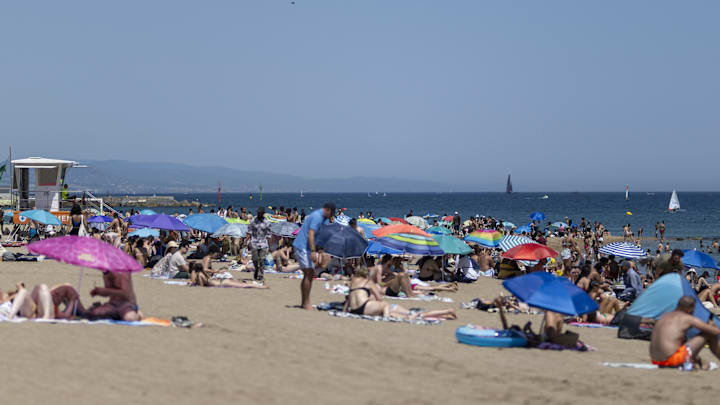The humidity skyrocketed and has been sweeping across the United States. Many are headed out to their nearby beaches, lakes, or public neighboring swimming pools. In a study from Veylinx, a behavioral research company, sheds light on SPF preferences, rising trends in skincare as well as sunscreen, and fear of sun exposure.
The growing awareness for sun protection and sunscreen products that offer more than simple UV defense. However, products with anti-aging benefits drive a 49% demand increase following +23-+33% for those with hydration, and vitamin C.
The summer is spend basking in the sun, 38% of people are never feel fully comfort when in walking, seated in the sun. In more than 60% report burning easily and 41% shares concern about skin damage, according to a Google Trend in searches on ''what does skin cancer lookalike?'' and sunscreen are being searched more than ever in the United States.
With an increase of anxiety around vulnerability from the sun, a must-need in education on the risk of UV exposure to the benefits of consistent sunscreen use. The top-performing sunscreen brands are Neutrogena (41%), Cerave (38%), Coppertone (35%), Olay (33%), Supergoop (17%) and Target’s Up & Up brand (14%). The hydrating benefits of Supergoop steered 17% while anti-aging
products from Supergoop, too, Cerave, and Olay saw an increase over the basic.
27% of consumers choose reef-safe sunscreens and whoever decides to pay for these products is willing to pay 14% more in making the reef-safe a possible important revenue driver for brands. The marine-conscious individuals make up 16% that choose sustainable packaging where available and pay more for it too.
The sunscreen usage trend reveals 30% of respondents applying sunscreen daily during the summer, but 21% apply it 5 or 6 times weekly. Either way, 65% prefer sunscreen with an SPF, a 27% use sunscreen year-round. 32% apply it only on sunny summer days which suggest a need for year-round education on sun safety.
Our friends and family make up 42% when it comes to learning about new sunscreen products and adults with children push 29% to use a different sunscreen for their kids followed by 35% on social media.
Nevertheless, fifty-seven percent use moisturizers with built-in SPF, and nearly three-quarters use tinted foundation with UV protection. Clear sunscreens developed to avoid leaving out the white cast were found to boost demand by 16% compared to traditional lotions and creams.
A market potential for beauty brands identifies an opportunity that combine sun protection with other products.
